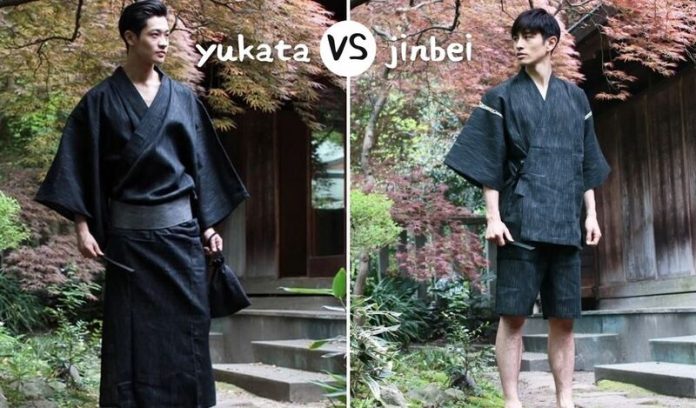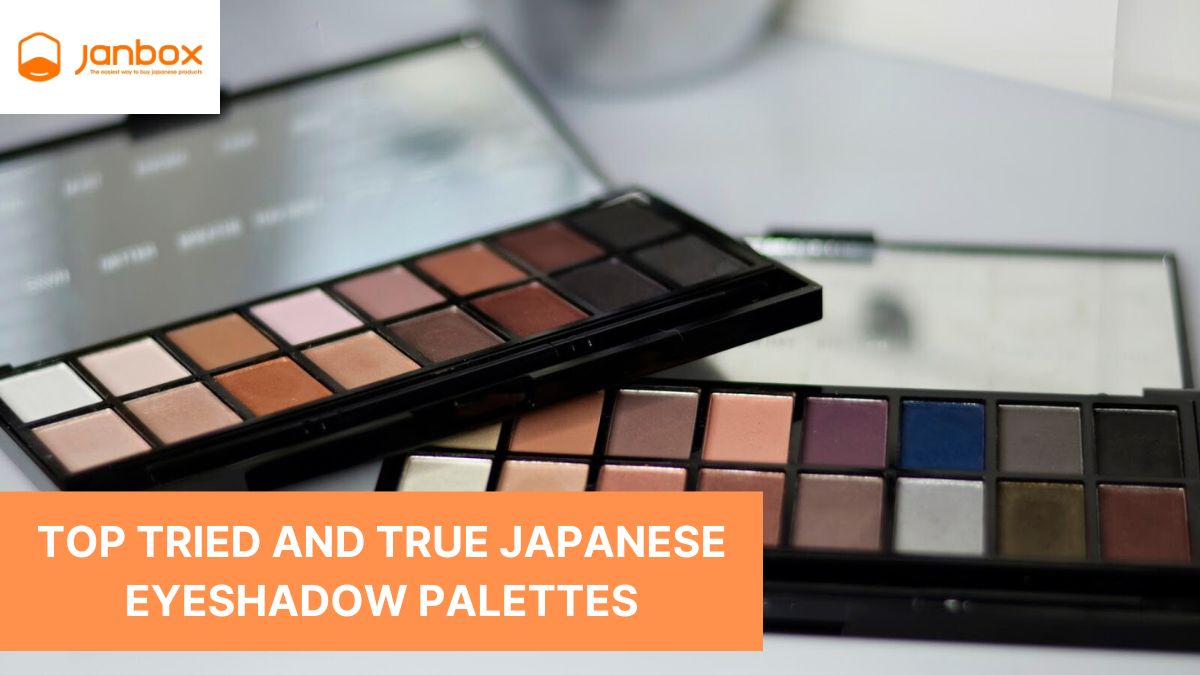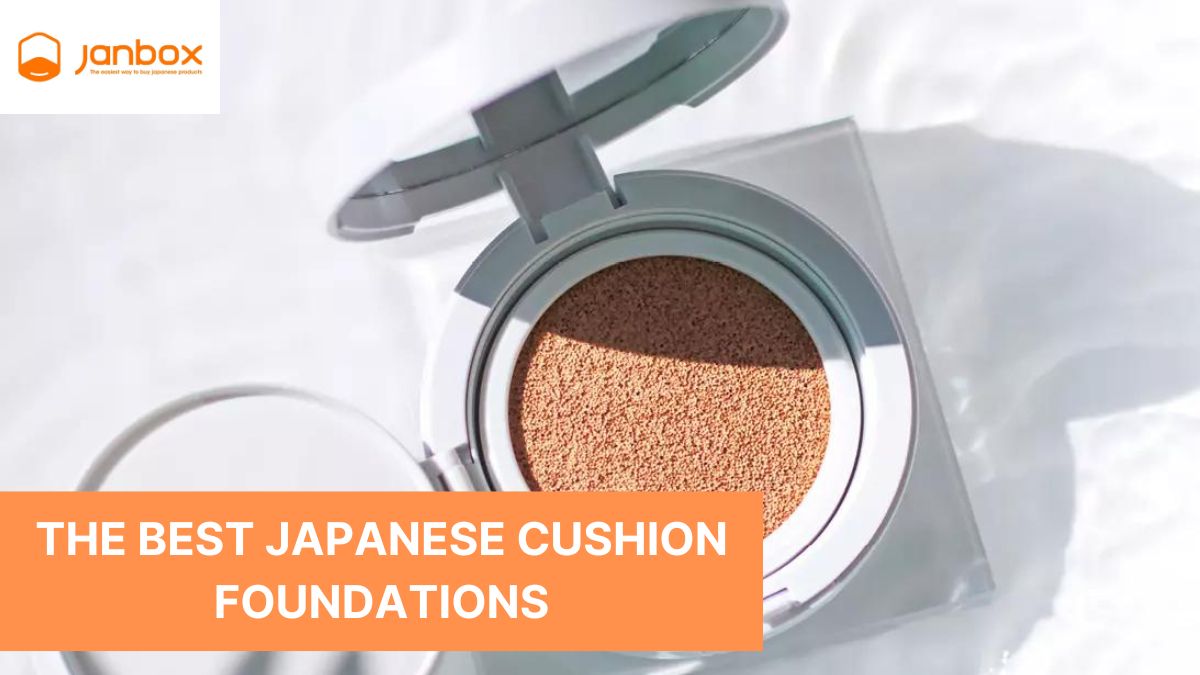If you are new to kimono and want to buy one, you may have difficulty distinguishing between Yukata and Jinbei. Despite some similarities, they are distinct from one another. Read on to find out how Yukata and Jinbei differ.
Difference between Yukata and Jinbei
Both Yukata and Jinbei are most commonly seen as casual Japanese outfits in the summer. Yukata has a rich history. For several years now, we have seen many Japanese women, as well as foreigners from all over the world, strolling through Japanese cities in Yukatas.
This outfit, which was previously reserved for summer parties, has become popular everyday wear as well as a gift. In contrast, while Jinbei was originally worn primarily by men and children, it is now popular among women as well.

Historically, Yukata were primarily worn by Japanese nobles during the Heian period (794 to 1185). Yukatas evolved from kimonos. Kimonos were formal clothing that was worn on a daily basis back then. Whereas, Jinbeis evolved from Jinbaori, a combat dress for samurai during the Sengoku period (the year 1467 to 1615). Because Jinbaori was designed to be worn during battle, it was simple to put on, remove, and move around in.
1. Yukata
What’s Yukata?
Yukata actually means “bathing cloth” in Japanese. However, modern users much prefer to use it outside rather than just in a bathtub. The kimono served as the basis for Yukata’s design. Kimonos are more difficult to wear since they consist of multiple layers and are typically reserved for more formal occasions like wedding ceremonies. It was not a really comfortable environment to move around in. Even basic activities like breathing and eating become challenging when one wears a kimono.
The Yukata, on the other hand, consists of only one layer, is worn in a manner that is considered to be more casual, and is a great deal simpler to put on. Moreover, the cumbersome obi (belt) of traditional kimonos have been replaced by a lightweight obi that is tied in a simple knot, making this garment more comfortable to wear.
The Yukata follows a similar construction to the kimono, consisting of five separate rectangular panels. In this case, the uniqueness comes from the patterns or the dye colors. These clothes, especially those aimed at children, are typically produced with industrial designs and bright colors, and they often have floral or seasonal motifs (fireworks, dragonflies, and goldfish bouquets). Because of the striking resemblance between Yukatas and kimonos, some people refer to Yukatas as the “summer kimono.”

A bit of the history of yukata and jinbei
Initially worn by the royal class, the Yukata was first known to exist during the Heian era (794–1185). At that time, residents were prohibited from taking a bath in their own homes because of the severe penalties levied by the government for starting a fire. So frequently, in the summer, residents had to use the town’s public bath. Because it was common for numerous people to perform ritual baths at the same time, the Yukata evolved with the primary intention of concealing the bare body, and it was originally made of hemp fibers, white cotton dyed or ornamented with traditional dyeing indigo (deep blue) patterns.
The Yukata was originally a cloth worn at home, beginning as a bathing cloth and progressing to a nightgown after bathing. However, as the Edo period progressed, people began to wear Yukata in the evening for matsuri or fireworks, in places where no formal attire was required.
The Yukata gradually evolved into a fashion accessory for going out, to the point where proper Yukata etiquette now includes wearing underwear. Underwear can be Western-style, but Japanese-style underwear, such as hada juban (“skin cloth”), is preferred.
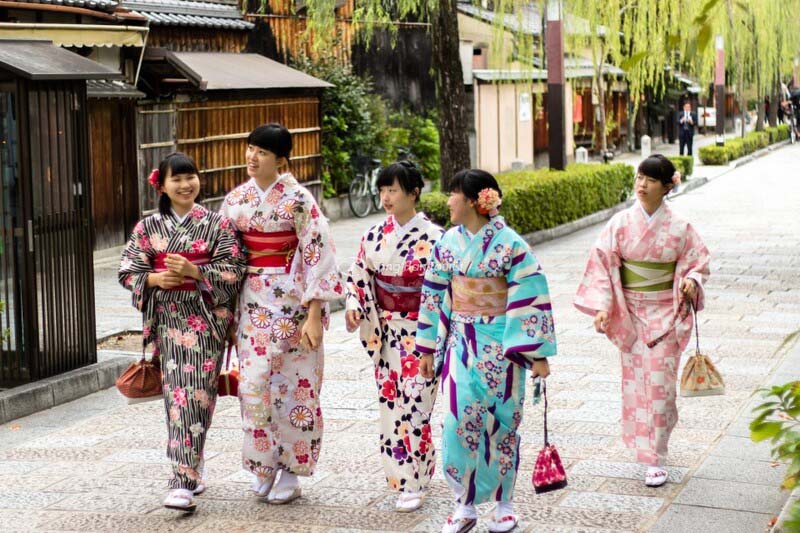
Originally, the Yukata evolved to incorporate a wide range of patterns and colors thanks to the influence of western clothing. Nowadays, the majority of them are mass-produced in cotton or blends of hemp and polyester.
It should be noted that the Yukata provided by ryokan and luxurious hotels are only to be worn within their premises or immediate surroundings. They, like their forefathers, are intended to conceal the bare body when leaving the bath, in between baths, or as sleeping gowns. Aside from onsen towns, avoid wandering around in only a ryokan Yukata!
2. Jinbei
What’s a Jinbei?
When you don’t want to dress up your Yukata but yet want a cool, breezy look, the Jinbei is the ideal choice. Let’s learn a little more about this well-known Japanese clothing item together.
Also known as jinb or hippari, it is traditional clothing constructed of robust and natural materials like hemp (linen) and cotton. Instead of a long-sleeved top and shorts, as was once the case, Jinbei is now made up of a top and shorts combo.
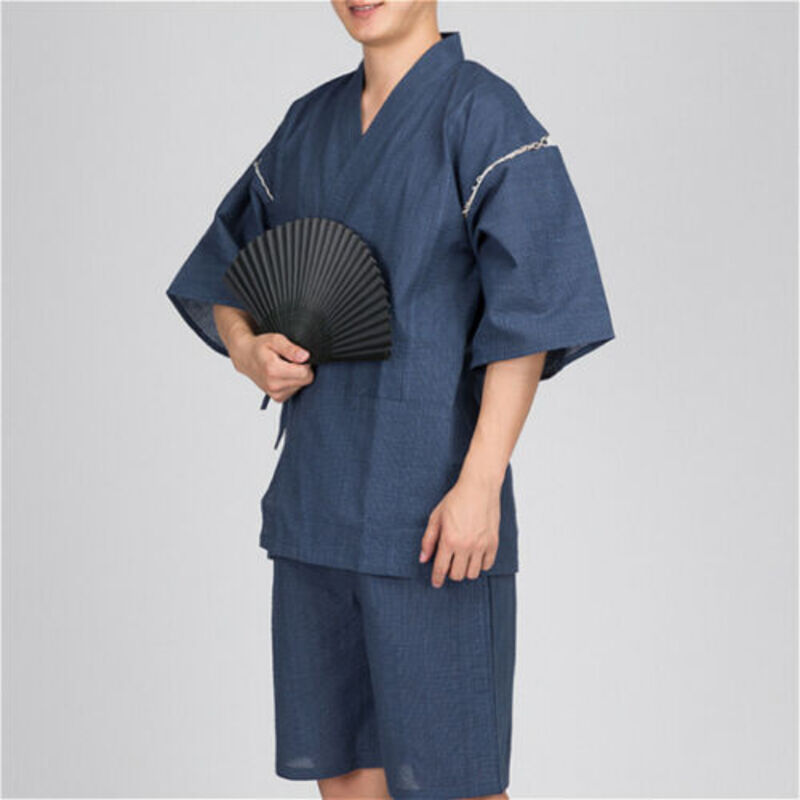
A bit of the history of yukata and jinbei
Jinbei was first worn by low-ranking samurai during the Sengoku era before becoming the ideal summer attire (1467 to 1615). In fact, according to its origins, the Jinbei evolved from the Jinbaori, a combat costume designed to be worn in battle.
Despite its simplicity, the Jinbaori allowed for a considerable deal of freedom of movement. As a result of this, the Jinbei is a more accessible form of this garment. Men began wearing the Jinbei at home only in the later years.
Wearing a Jinbei was an important aspect of Japanese culture for Japanese males. They wore these clothes all the time, whether they were gardening or just wandering around the house. At first, it was only worn by men, but it has since democratized itself and may be worn by both sexes.
Sober colors such as navy blue, indigo, gray, black, or green were traditionally used for Jinbei’s plain or fine stripe designs. Today, the Jinbei is often decorated with beautiful designs, embroidery, or coloring to make it stand out from a distance as a celebratory garment. There are, of course, older versions for those of us who prefer the more traditional approach.
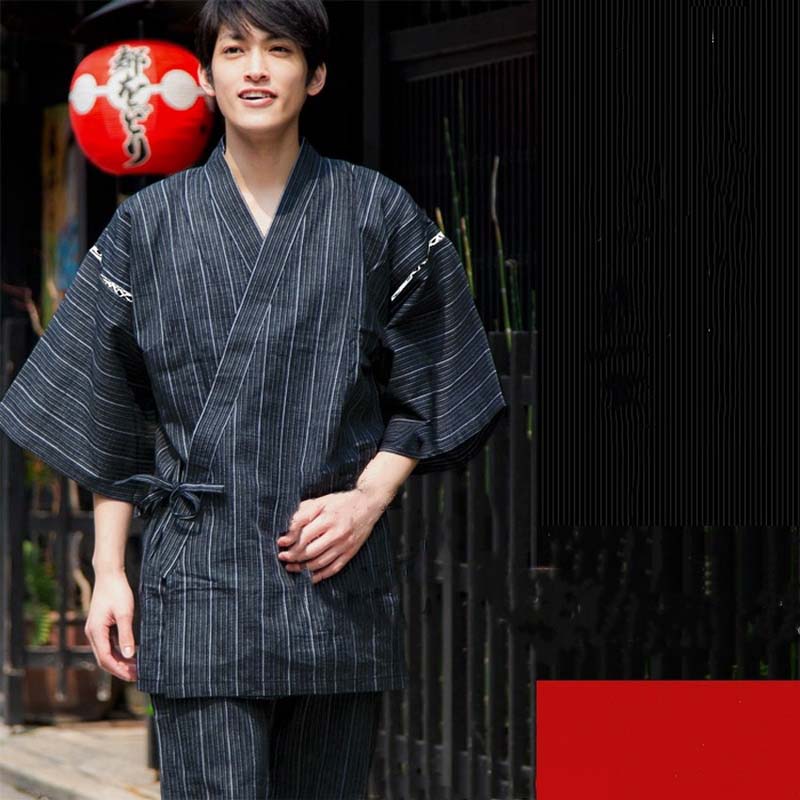
Nowadays, when summer arrives, the Japanese archipelago’s climate heats up dramatically, with temperatures reaching 45°C (113°F). Japanese fashion has overcome this issue by creating a well-known piece of clothing that was previously only worn indoors.
Important note: most Jinbei on the market is gender-neutral. When it comes to women’s Jinbei, flowery prints or embroidery of kanji, gods or mythical animals from Japanese mythology are more common.
>>> Read more: What is a Hakama? Everything You Need To Know (2022)
How to wear
1. Yukata
The Yukata is worn over a t-shirt or other undergarments. Next, wrap the right side of the Yukata around your left hip, then the left side over your right, when you’ve finished putting it on.
Remember: The right side of the kimono must always be closed on the left (because the body of the deceased is covered with a white Yukata whose sides are crossed oppositely).
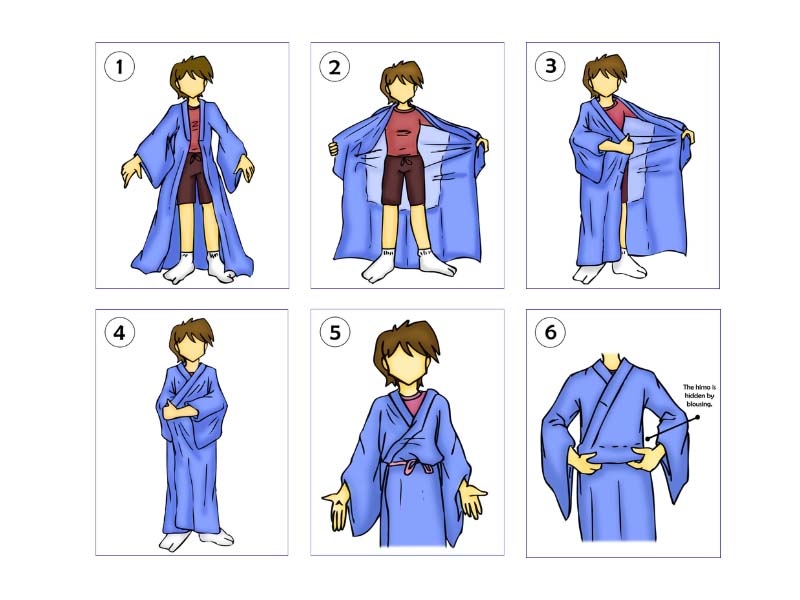
Tighten the knot by wrapping the obi around the Yukata, goes from the back to the front, two or three times. A good rule of thumb is to have the panels at ankle level and the length on both sides to be the same.
2. Jinbei
When it comes to the protocol of wearing a Jinbei, it’s less strict than when it comes to the ritual of wearing other traditional Japanese garments such as Yukatas, Hakamas, and Kimonos. To make matters even more confusing, the only difference between the two is that a Kimono’s belt is attached to an obi instead of the Jinbei’s side-knot closure.
Here are the three simple steps of wearing a Jinbei:
- You can choose to wear shorts or pants, depending on your inclination, and tie them at the waist in the manner you like.
- When putting on the jacket, make sure the left cuff is wrapped around the right cuff of your waist.
- Make a knot with the two ropes on either side of the garment, and you’re done!
>>> Read more: Japanese Kimono Types – All You Need To Know about Kimono
Price of Yukata and Jinbei
The cost of a new Yukata can add up rapidly between the garment, the obi, and the geta (traditional wooden sandals) that are often included. On average? One Yukata of Jinbei can cost anywhere from 5,000 to 15,000 yen (39 to 117 euros), while an obi (goes with Yukata)can cost anywhere from 3,000 to 8,000 yen (23 to 63 euros) in specialty shops.
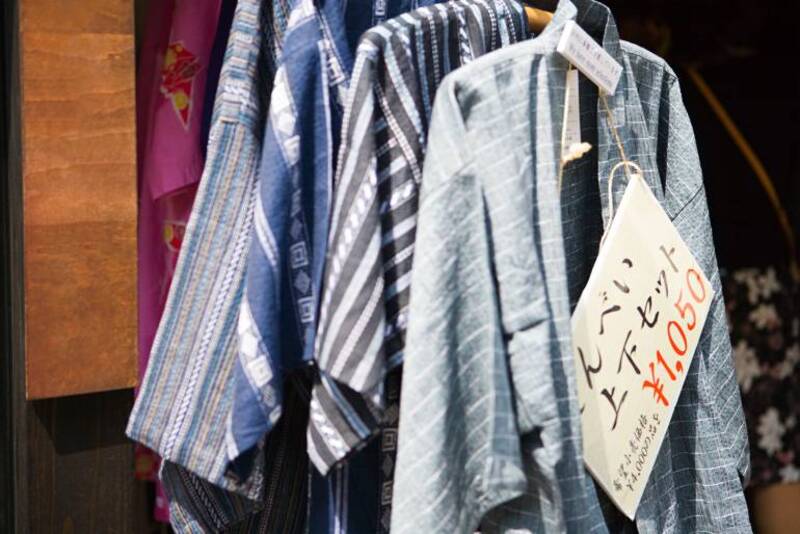
Yukata and Jinbei can also be purchased as a set. When buying in stores, these Yukata “all-inclusive ” (Yukata + Obi + Geta) are a great way to save money on summer attire, with prices ranging from 3,000 to 6,000 yen (between $26-52 and 47-94 Euros).
Fortunately, it is possible to get a Yukata and Jinbei set directly from Japan for a very reasonable price. For about 20 dollars, you can get a nice Yukata and Jinbei from several Japanese e-commerce sites like Yahoo! Shopping Japan, Amazon Japan and Rakuten Japan.
The information above has presented you with all of the diferent between Yukata and Jinbei in order to help you make your decision easier. If you want to buy Japanese traditional clothes directly from local stores in Japan but don’t want to waste too much time, Janbox is the place to go. We’ll help you reduce anxiety, worry, and the time it takes to buy a product with our intelligent proxy service! You can order high-quality items from Japan and have them delivered to your home quickly and safely in just a few simple steps.
Website: https://janbox.com.
Email: [email protected].
Facebook: https://www.facebook.com/janbox.com.en.

